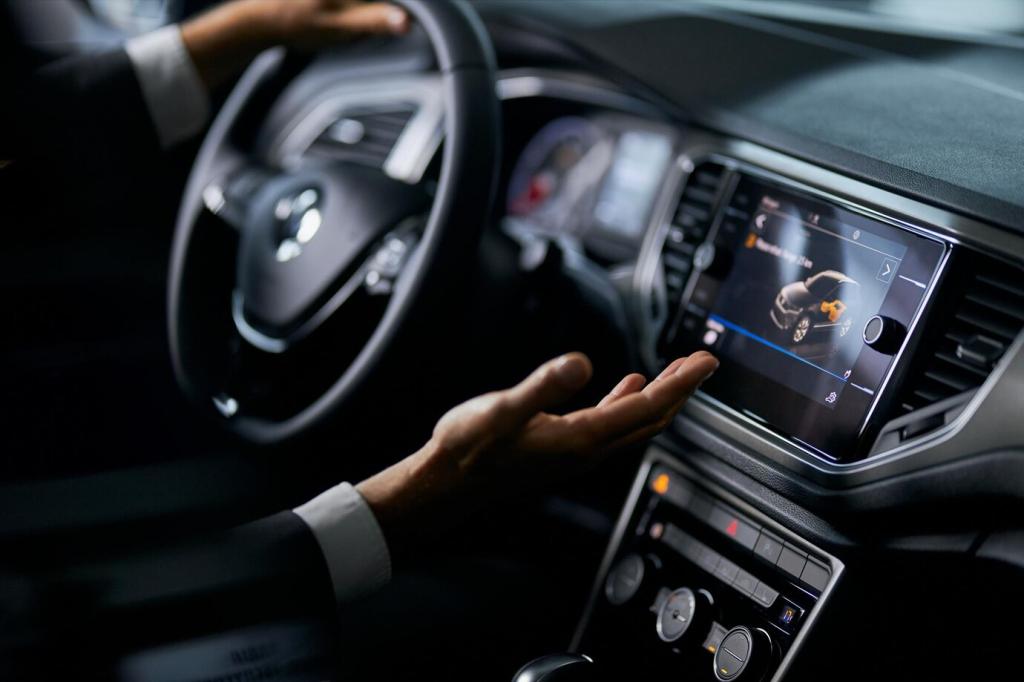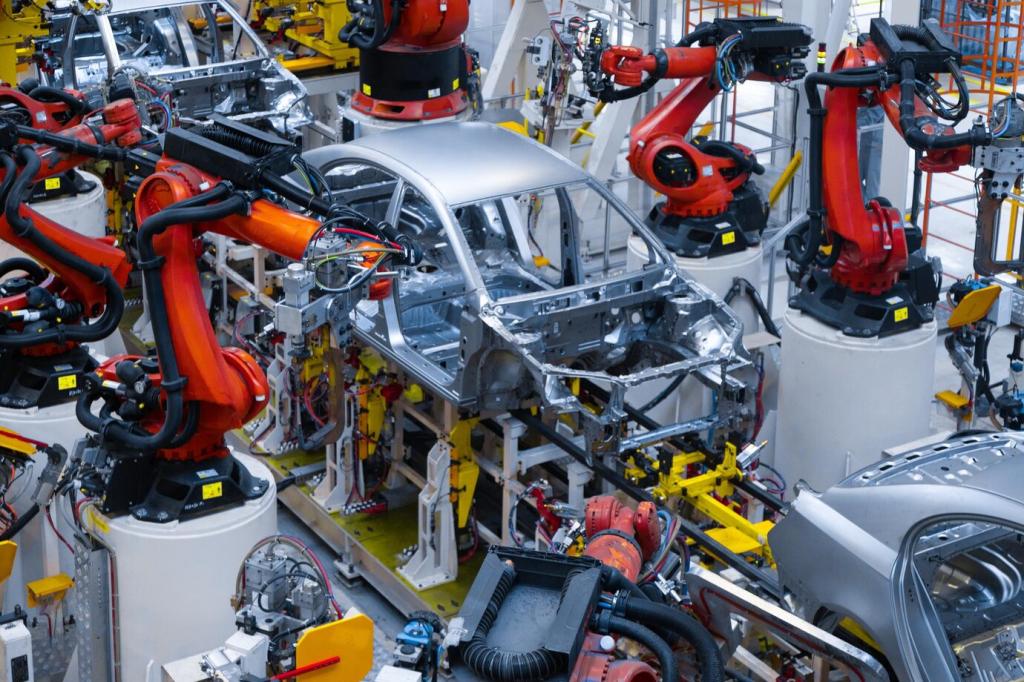Innovations in Automotive Technology Shaping Modern Vehicles
The automotive industry is witnessing a remarkable era of technological transformation, reshaping how vehicles are designed, built, and utilized. From advanced connectivity to eco-friendly propulsion systems, these innovations are enhancing safety, performance, and convenience on a scale never seen before. As modern vehicles become smarter and more efficient, they are not only revolutionizing the driving experience but also redefining our relationship with mobility and the environment. Below, we explore the key innovations driving this evolution and examine their profound impact on today’s automotive landscape.

Electric powertrains are at the heart of the transition to sustainability in the automotive industry. By replacing internal combustion engines with battery-powered motors, electric vehicles (EVs) offer zero local emissions and significantly lower operating costs. Their instant torque delivery leads to impressive acceleration, while the absence of engine noise results in a quieter, more refined ride. Ongoing advancements in battery technology and charging infrastructure are making EVs more accessible and convenient for a growing number of drivers.

Connected Car Technologies
Vehicle-to-Everything Communication
Vehicle-to-Everything (V2X) communication enables cars to exchange information with other vehicles, traffic infrastructure, and even pedestrians in real-time. This technology enhances situational awareness, allowing vehicles to anticipate hazards, adjust their speed, and respond proactively to changing road conditions. From warning drivers about upcoming roadworks to coordinating traffic flows at busy intersections, V2X promises a new era of safer and more efficient travel for everyone on the road.
Over-the-Air Updates
Over-the-air (OTA) updates allow automakers to remotely upgrade and enhance a vehicle’s software, delivering new features or fixing issues without requiring a service visit. Much like smartphones, modern vehicles can now receive security patches, performance improvements, and even entirely new functionalities directly from the manufacturer. This ensures drivers benefit from the latest innovations throughout their vehicle’s lifecycle, improving reliability and satisfaction with minimal inconvenience.
In-Car Infotainment Systems
The latest in-car infotainment systems offer intuitive access to navigation, audio streaming, and smartphone integration through touchscreens, voice commands, and cloud connectivity. These systems are designed to enhance the driving experience while minimizing distraction, often featuring support for hands-free calls, real-time traffic updates, and personalized content. As infotainment platforms become more sophisticated, they provide a seamless blend of entertainment, utility, and safety, tailored to the preferences of modern drivers.
Previous slide
Next slide

Lightweight Materials and Structural Innovation
High-Strength Steel and Aluminum Alloys
High-strength steels and aluminum alloys are enabling manufacturers to create vehicle structures that are both lighter and more robust. These materials provide exceptional crash resistance while allowing engineers to reduce the overall weight of the vehicle, leading to significant gains in fuel efficiency and carbon emissions. Continuous advances in metallurgy and manufacturing processes ensure that vehicles can meet stringent safety standards while delivering improved performance.
Carbon Fiber Composites
Carbon fiber composites have gained prominence in the construction of high-performance and luxury vehicles due to their impressive strength-to-weight ratio. Unlike traditional metal components, carbon fiber parts are exceptionally light yet remarkably durable, offering benefits in acceleration, handling, and safety. While currently more expensive to produce, ongoing research is making carbon fiber materials increasingly accessible for mass-market applications, promising a future where lightweight innovation becomes mainstream.
Advanced Polymer Technologies
Incorporating advanced polymers in various automotive components, such as interior trim, bumpers, and engine covers, helps further reduce weight and enhance design flexibility. These materials offer resistance to corrosion, weather, and impact, extending the durability and aesthetics of modern vehicles. The wide variety of polymers available allows automakers to tailor solutions for specific needs, contributing to quieter, more comfortable, and inventive car interiors as well as lighter, more resilient exteriors.
Modern airbag systems utilize multiple sensors and deployment strategies to maximize occupant protection in the event of a crash. Adaptive airbags can adjust their inflation force and timing based on the severity of the collision and the size or position of occupants. In addition to front and side airbags, newer configurations include knee, curtain, and even rear-seat airbags, creating an all-encompassing safety net that dramatically reduces the risk of injury in various accident scenarios.
Enhanced Safety Features
Infotainment and Personalization
Voice-activated assistants are transforming how drivers interact with their vehicles, offering hands-free control over navigation, music, communication, and vehicle settings. Using natural language processing and artificial intelligence, these systems understand and respond to complex commands, reducing distraction and enhancing convenience. As connected cars integrate with smart home devices and cloud services, voice assistants provide seamless access to information and entertainment from within the vehicle cabin.

Sustainability and Eco-Responsible Manufacturing
Green Manufacturing Processes
Green manufacturing processes emphasize the reduction of energy consumption, waste, and emissions in auto production facilities. Automakers are investing in renewable energy sources, such as solar and wind, to power factories and minimize their carbon footprint. Water recycling, closed-loop material systems, and eco-friendly paints and coatings further contribute to sustainability. This holistic approach ensures that the positive environmental impact of efficient vehicles is matched by responsible production methods.
Recycled and Bio-Based Materials
The use of recycled and bio-based materials in automotive manufacturing is growing swiftly. By incorporating recycled plastics, metals, and fibers into vehicle components, automakers are cutting down on resource extraction and landfill waste. Bio-based materials such as plant-derived fabrics or bioplastics offer renewable alternatives that maintain durability and performance. These initiatives reflect a broader industry trend towards circular economies and demonstrate a commitment to both innovation and environmental stewardship.
End-of-Life Vehicle Management
Sustainable innovation also encompasses how vehicles are handled at the end of their lifecycle. Automakers and industry groups are developing systems for the responsible dismantling, recycling, and recovery of materials from scrapped cars. Initiatives include designing vehicles for easier disassembly, safe battery recycling programs for electric models, and the recovery of valuable metals for reuse. These strategies not only mitigate environmental impacts but also support the sustainable sourcing of raw materials for the next generation of vehicles.
